
Alaska is known for many things. It has more glaciers, mountains, lakes, and rivers than a person could even imagine. Not to forget, the wildlife such as bears (it is called the “bear country” for a reason!), moose, bison, caribou, salmon, jellyfish, puffins, and many others.
While some enjoy bold and beautiful sceneries, others enjoy their scenery from their backyards. If you are from the latter lot, then this article is for you! Alaska is filled with over 475 species of magnificent and spectacular birds. And you don’t only find them in the wild or after spending hours just to get a glimpse of them. You can enjoy their beauty from the comfort of your home too. Whether you are an avid bird watcher or not, no one can resist staring at these beautiful little marvels of nature that visit your backyard.
Do you want to know more about the birds you see in your backyard? Maybe you want to be able to identify them.
Whatever the reason may be, we have got you covered. While it is impossible to cover all species in one article, we have listed down the most common backyard birds of Alaska. And not only that, but you will also find helpful tips to attract more of each of these birds to your backyards, because let’s be honest, who wouldn’t want that!
Keep reading to get to know about the backyard birds of Alaska and how to attract them to your yard.
GET KIDS BIRD WATCHING
Top Backyard Birds Found in Alaska
Dark-eyed Junco
These magnificent birds are sparrows that vary in color, depending on the state they are found in. Usually, in the west, they will be brown, white, or black, and in the east, they have more of a slate color.
The Dark-eyed Junco, sometimes known as the snowbirds, are bred in coniferous or mid-coniferous forests. Although in winter, you will find them traveling towards open land with small groups, around twenty to fifteen.
If you want to attract more Dark-eyed Junco in your backyard, using platform feeders or scattering the seeds on the ground is the most ideal. Try using grains such as nyjer, millets, cracked corn, peanuts, and black oil sunflower seeds.
Black-capped Chickadee
With a round head, small neck, and tiny body, to call Black-capped Chickadees cute would be an understatement. These curious creatures love to investigate everything, that includes you as well.
They have gray wings, tails, and back, with white cheeks and the top of their head is black along with their beaks. You will mostly find the around feeders, quickly grabbing the seeds and flying away somewhere else to eat them. So what if they are birds? They need their privacy. Apart from seeds, they love to nibble on berries, spiders, insects, and even suet. If you want to attract more of these adorable birds to your backyard, try using sunflower seeds, suet, peanuts as well as peanut butter.
Black-capped Chickadees are usually the first to find any feeders, they love their food, so it’s very likely for them to eat from your hand as well.
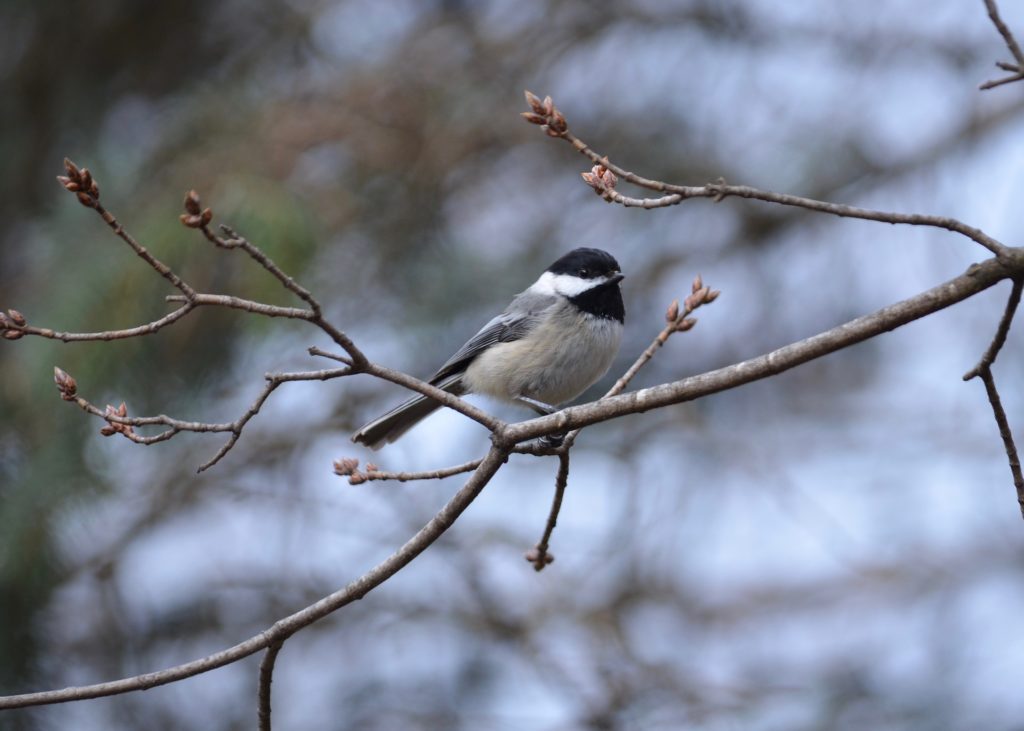
Boreal Chickadee
Boreal Chickadees are very active, agile, and cheerful creatures. They are small, with grayish-brown feathers, a darker brown at the top of their head, white underside of the cheeks with a black bib.
They are primarily in coniferous forests and near different bodies of water. Other than that, they are also found in mixed forests. These songbirds mainly feed on insects and different seeds.
Try using peanuts, mealworms, suet, nyjer seeds, and black oil sunflower seeds to attract them to your backyard.
Red-breasted Nuthatch
You’ll find Red-breasted Nuthatches mainly in coniferous forests, searching for cones, but they do visit backyard feeders as well. They have a rusty, yellowish underside, black and white stripes on their head, and grayish-blue back.
The name Nuthatch comes from the word ‘Nut Hack’ because of their habit of pecking or hacking nuts open by putting them in wedges between barks and using its bill to hammer it open.
To attract more Red-breasted Nuthatches, use sunflower seeds, peanuts, and mealworms.
Steller’s Jay
Steller’s Jays, although small, are very smart, inquisitive, and loud. Their chest, head, and back are black, with a small triangle crest on top of their head. The rest of their body is a beautiful deep but vibrant blue.
Steller’s Jays are able to eat many of the things they forge, such as insects, nuts, berries, eggs, nestlings, etc. Although adorable, they can create problems for you if you leave your picnic food unguarded or even your garbage. Speaking of picnics, you will find them commonly found near picnic tables, backyard feeders, campgrounds, and evergreen forests.
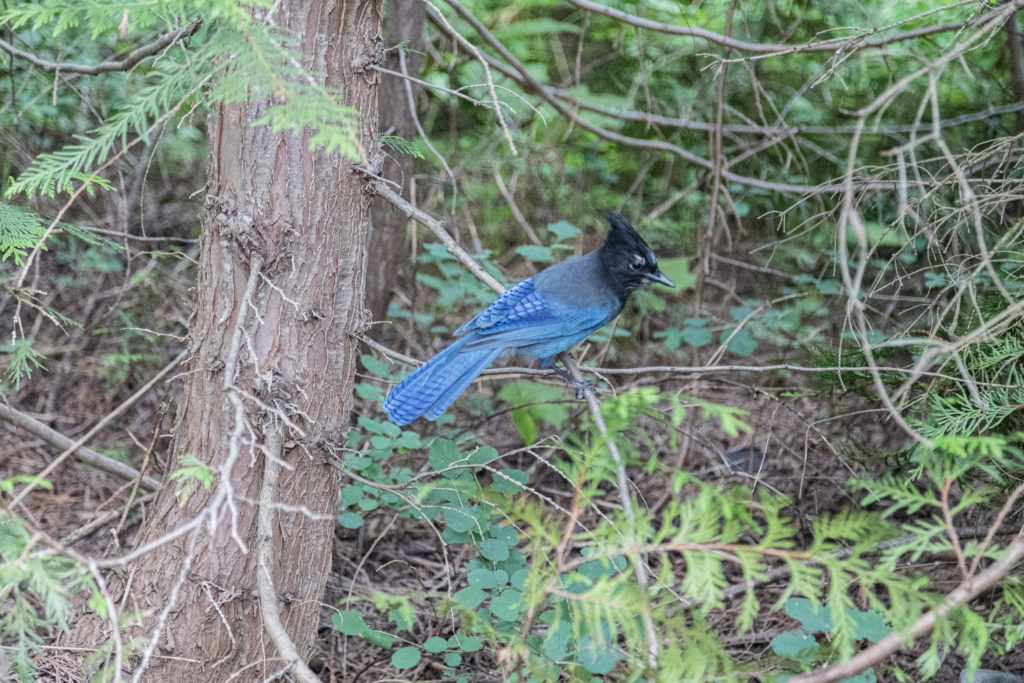
Downy Woodpecker
Downy Woodpeckers are small birds that are frequent visitors of backyard feeders. They have black and white feathers, with a tiny red patch on top of their head, just a pop of color.
Many people confuse them with Hairy Woodpecker because of how similar they look. You can find Downy Woodpeckers along streams, in backyards, and in city parks. They mainly enjoy insects and larvae but also like to indulge in berries, grains, and acorns. To attract them to your backyard, you can try peanuts, black oil sunflower seeds, and millets using platform feeders, but a suet feeder is usually recommended.
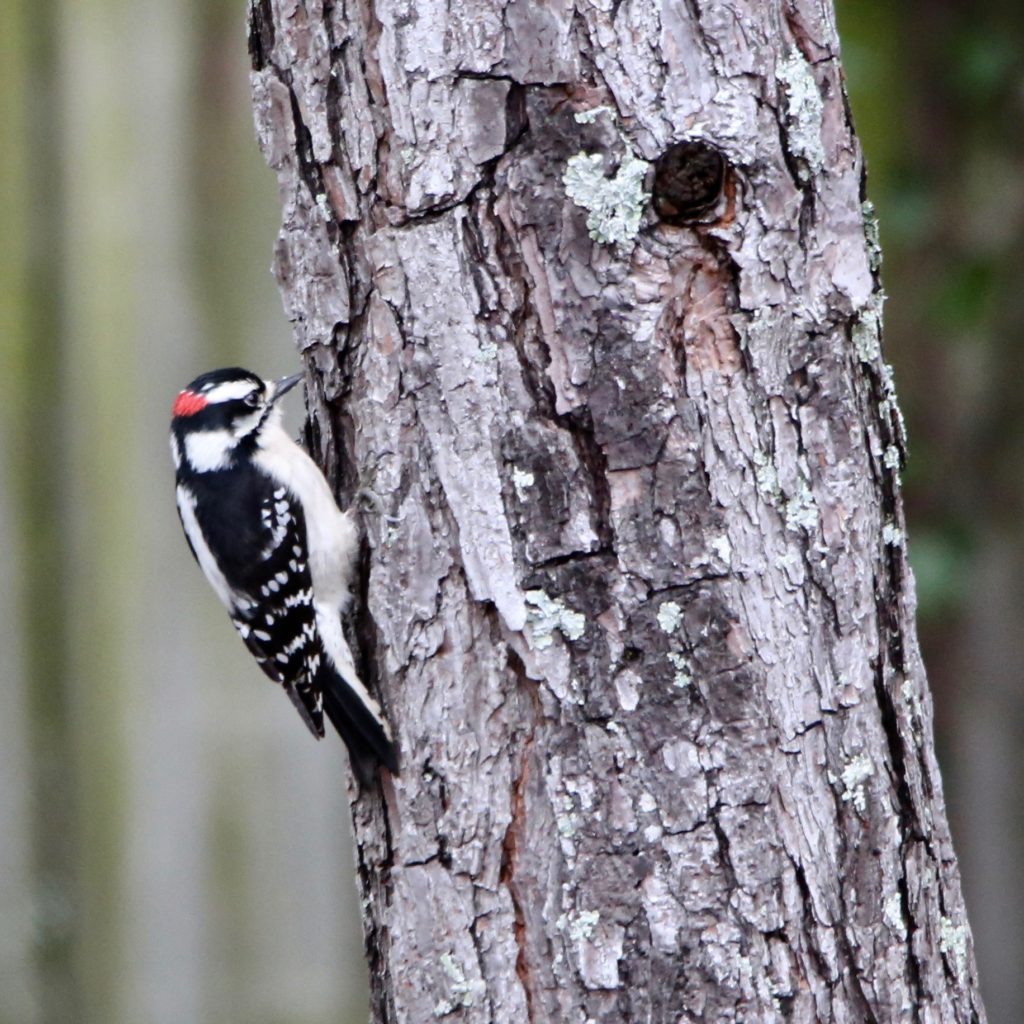
Yellow-rumped Warbler
These beautiful Yellow-rumped Warblers have mainly gray feathers, with a bit of yellow around the cheeks and the rump along with white feathers on the wings. Their color may differ a little bit depending on their gender and according to different seasons as well. The females tend to have more brown feathers. During winters, the Yellow-rumped Warblers are more player, but their color returns to them during springtime.
They are predominantly bred in Canada, and from there, they migrate to central and southern North America as well as the Pacific Coast. If you want to attract Yellow-rumped Warblers to your backyard, you can do so using raisins, sunflower seeds, peanut butter, and suet.
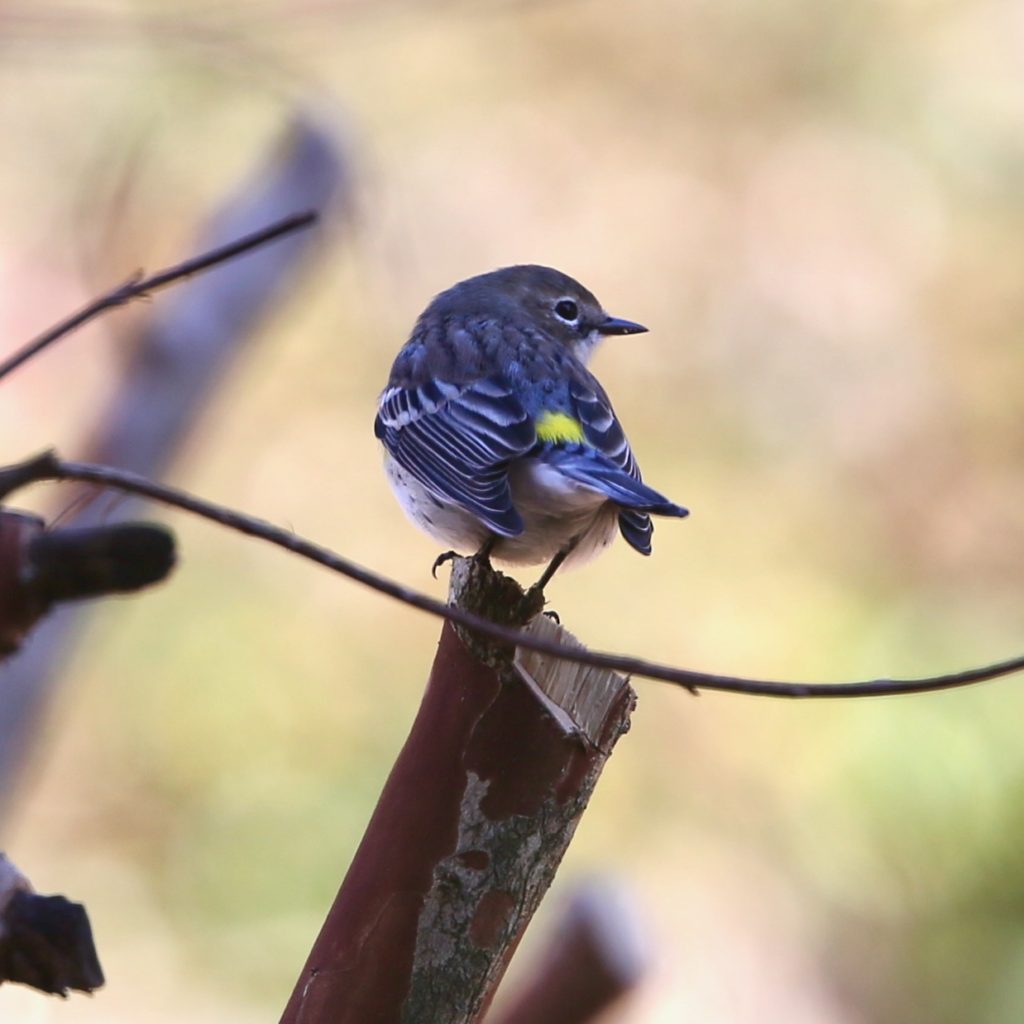
Ruby-crowned Kinglet
Ruby-crowned Kinglets are delicate little songbirds with beautiful olive-green feathers. Male ones even have a small, vibrant red crown at the top of their heads. But It’s flat, so it can be a bit difficult to see, but it is absolutely amazing if you do get to see one.
These crowned birds are very difficult to spot, so consider yourself lucky if you do spot one. They are not only very fast but also quiet and mostly flit around the foliage of shrubs and short branches in search of insects and spiders. Although if you do want them to visit your backyard, you can attract them using platform feeders for peanut hearts, mealworms, and hulled sunflower seeds, or even suet feeders.
White-crowned Sparrow
White-crowned Sparrows are large sparrows that are a bit grayish. They have small bills and long tails. The bold black and white stripes on their head give these sparrows a fierce look.
You can find them on roadsides, weedy fields, and forest edges, searching for fruits like blackberries and elderberries, along with seeds of grass and weed. You can attract White-crowned Sparrows to your backyard with sunflower seeds.
After breeding in arctic Canada and Alaska, they head south for the winters. Although, some may stay in small areas on the west and Pacific coast all year long.
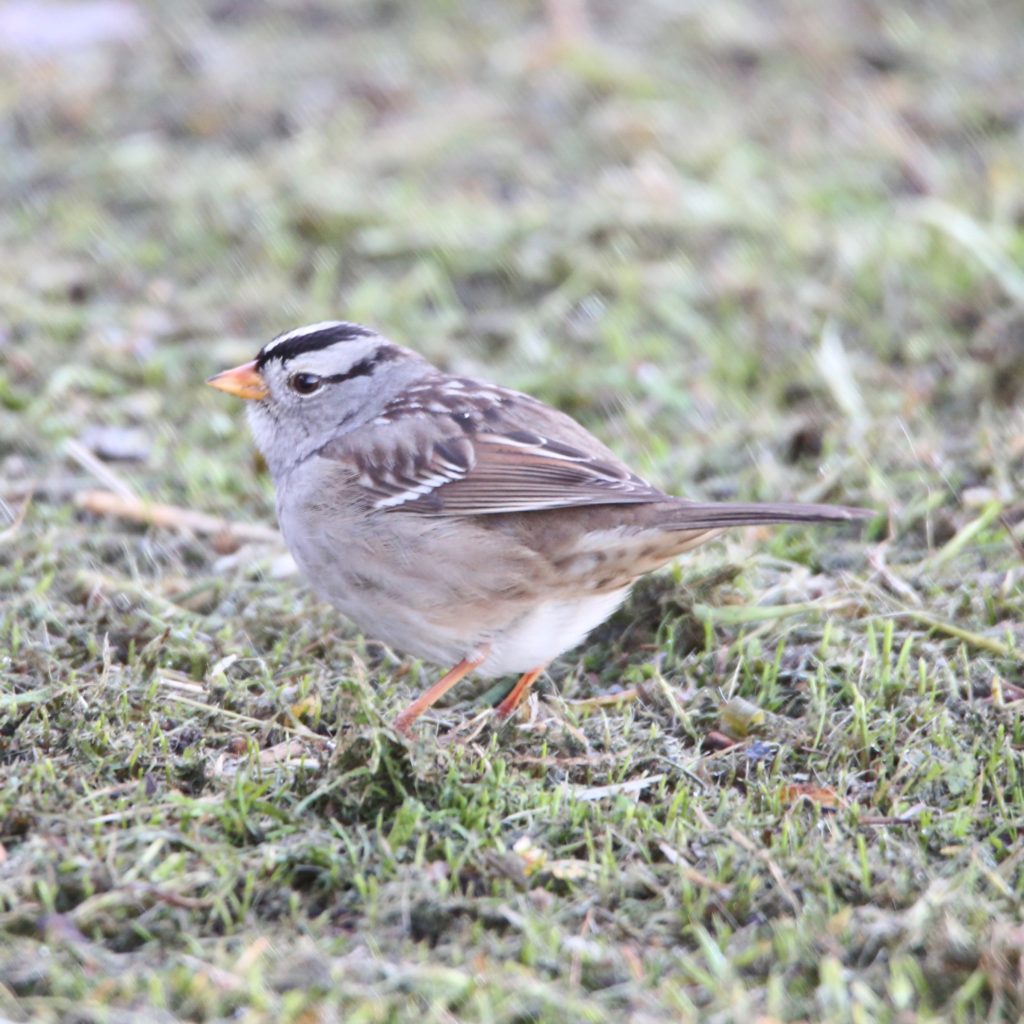
Pine Siskin
With streaked yellow and brown feathers, Pine Siskin are small finches. They have short but pointed bills, a forked tail, long pointed wings. Even though their name is a dead giveaway, Pine Siskins mostly seeds that are from conifers, along with seeds from weeds and grasses.
You can attract Pine Siskins to your backyard with nyjer and thistle feeders or by using suet or black oil sunflower seed.
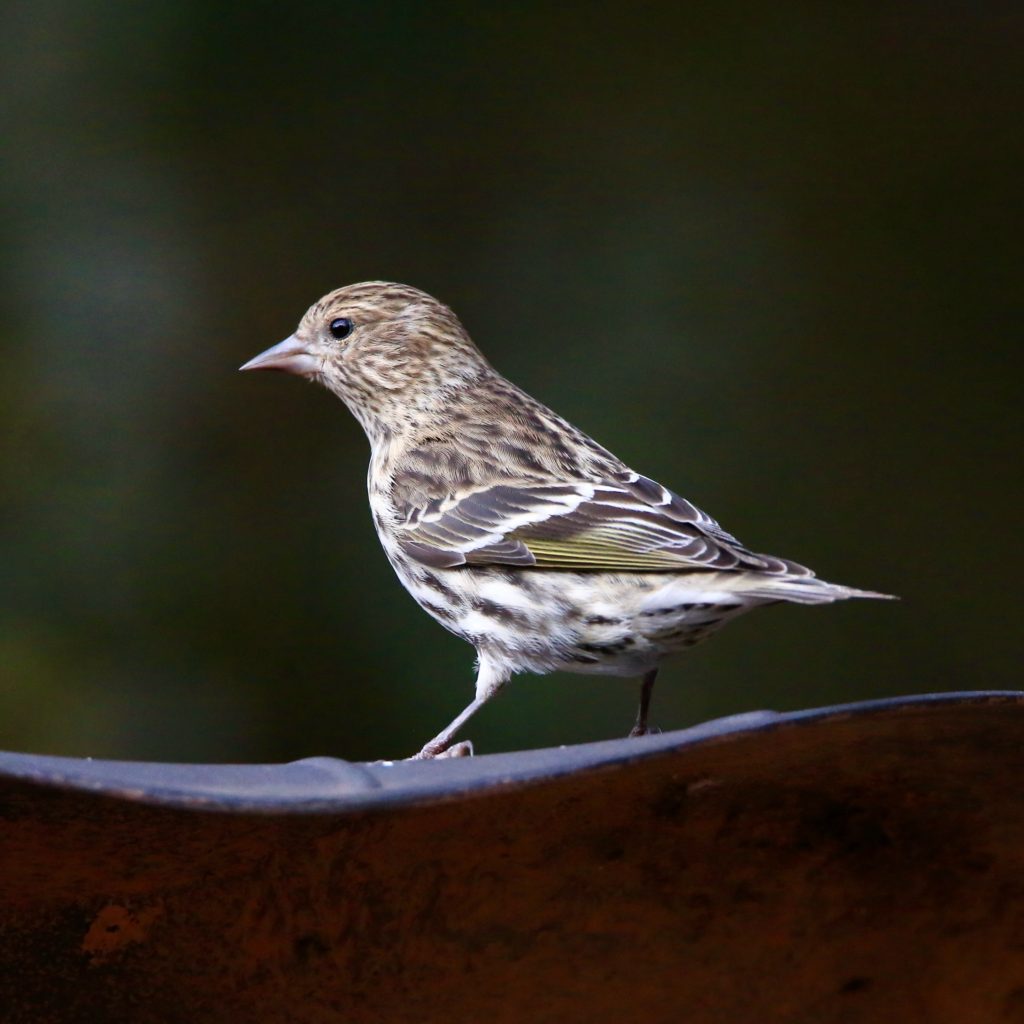
In Conclusion
So here you go, from Dark-eyed Junco ‘snowbird’ to the Red-breasted Nuthatch, these are the most common backyard birds you will find in Alaska. Each bird has their own attributes, whether it’s the quietness of the Ruby-crowned Kinglet or the loudness of a vibrant Steller’s Jay. Granted, these birds are common, but that doesn’t take away from their beauty and their specialty. So now, have fun attracting these magnificent creatures to your backyards in Alaska and enjoy staring at them and their liveliness.






